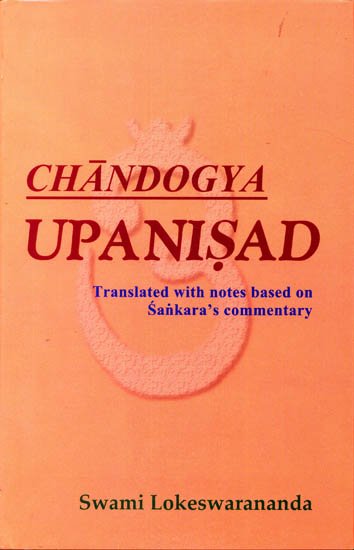Chandogya Upanishad (english Translation)
by Swami Lokeswarananda | 165,421 words | ISBN-10: 8185843910 | ISBN-13: 9788185843919
This is the English translation of the Chandogya-upanishad, including a commentary based on Swami Lokeswarananda’s weekly discourses; incorporating extracts from Shankara’s bhasya. The Chandogya Upanishad is a major Hindu philosophical text incorporated in the Sama Veda, and dealing with meditation and Brahman. This edition includes the Sanskrit t...
Verse 3.18.2
तदेतच्चतुष्पाद्ब्रह्म वाक्पादः प्राणः पादश्चक्षुः पादः श्रोत्रं पाद इत्यध्यात्ममथाधिदैवतमग्निः पादो वायुः पादा अदित्यः पादो दिशः पाद इत्युभयमेवादिष्टं भवत्यध्यात्मं चैवाधिदैवतं च ॥ ३.१८.२ ॥
tadetaccatuṣpādbrahma vākpādaḥ prāṇaḥ pādaścakṣuḥ pādaḥ śrotraṃ pāda ityadhyātmamathādhidaivatamagniḥ pādo vāyuḥ pādā adityaḥ pādo diśaḥ pāda ityubhayamevādiṣṭaṃ bhavatyadhyātmaṃ caivādhidaivataṃ ca || 3.18.2 ||
2. Brahman as the mind has four feet [or, quarters]. The organ of speech is one foot; prāṇa is the next foot; the eyes are the third foot; and the ears are the fourth foot. This is the adhyātma [the physical and mental] aspect of Brahman. Next is the adhidaivata aspect. Fire is one foot; air is another foot; the sun is the next foot; and the quarters are the fourth foot. These two ways of meditation are advised: adhyātma and adhidaivata.
Word-for-word explanation:
Tat etat catuṣpāt brahma, this Brahman [as the mind] is fourfold; vāk pādaḥ, speech is a foot; prāṇaḥ pādaḥ, prāṇa [the vital force] is a foot; cakṣuḥ pādaḥ, the eyes are a foot; śrotram pādaḥ, the ears are a foot; iti adhyātmam, this is the adhyātma [meditation—i.e., on the body and mind]; atha adhidaivatam, next, the meditation relating to the elements and worlds; agniḥ pādaḥ, fire is a foot; vāyuḥ pādaḥ, air is a foot; ādityaḥ pādaḥ, the sun is a foot; diśaḥ pādaḥ, the quarters are a foot; ubhayam ādiṣṭam bhavati, two ways [of meditation] are advised; adhyātmam ca adhidaivatam ca, adhyātma and adhidaivata.
Commentary:
The word pāda is not to be taken literally, for Brahman has no feet. Brahman is infinite, but here it is conceived as having four feet—as if it is covering the whole universe with them. Pāda also means a quarter, or a part.
First let us imagine our mind and body together as Brahman. This is a meditation on the adhyātma level. Then let us imagine that this Brahman has four feet. What are the four feet? They are the organ of speech, the vital breath, the eyes, and the ears.
We can also do this meditation on the adhidaivata level—that is, as the worlds and the elements. First, let us imagine Brahman as ākāśa, space. Brahman’s four feet would then be fire (agni), air (vāyu), the sun (āditya), and the quarters (diśa).
A cow has four feet to take it where it wants to go. Similarly, a human being is guided to where he wants to go by his organ of speech, his organ of smelling, his eyes, and his ears.
Again, just as the four legs and feet of a cow come out of her body, in the same way, fire, air, the sun, and the quarters seem to come out of space
